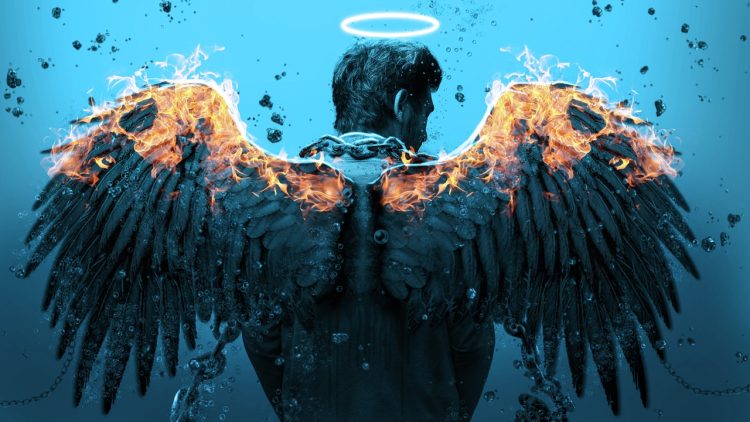The Devil Wears Prada, written by Lauren Weisberger, is an iconic story that captures the ruthless world of high fashion through the eyes of a young assistant named Andy Sachs. When the book was published in 2003, it quickly became a bestseller, blending sharp satire with a behind-the-scenes look at the glossy yet unforgiving world of high-end fashion magazines. In 2006, the story was brought to the big screen in a film adaptation starring Anne Hathaway as Andy and Meryl Streep as Miranda Priestly, the formidable editor-in-chief who became a cultural icon. This article explores how The Devil Wears Prada differs in book and movie form, focusing on character portrayal, tone, and the thematic impact of the two mediums.
Character Portrayal: Humanizing or Dehumanizing the Dragon Lady?
One of the most notable differences between the book and the film adaptation of The Devil Wears Prada is the portrayal of the characters, especially Miranda Priestly. In the book, Miranda is depicted as a cold and demanding boss, embodying the archetypal “dragon lady” who makes unreasonable demands of her assistants. Weisberger’s Miranda is devoid of warmth, and her lack of empathy highlights the harsh realities of the fashion industry. Miranda’s character in the book is largely two-dimensional, serving as an embodiment of all that is wrong with the culture of power and excess.
However, in the film, Meryl Streep brings a complexity to Miranda that transforms her from a straightforward villain into a character who elicits a degree of sympathy. Streep’s performance adds depth to Miranda, allowing audiences to see glimpses of vulnerability beneath her steely exterior. The film introduces subtle moments—like Miranda’s quiet reflection during her marital crisis—that suggest her demanding nature is a necessary survival mechanism in the cutthroat fashion world. This nuance helps viewers understand why Miranda behaves as she does, making her both an intimidating boss and a relatable figure. The cinematic version of Miranda blurs the lines between antagonist and protagonist, inviting the audience to see her as a powerful, if flawed, human being rather than just a villain.
Similarly, Andy’s character is portrayed differently across the two mediums. In the book, Andy is largely focused on surviving her year-long tenure under Miranda’s tyrannical rule, while her frustrations and the toll the job takes on her personal life are given significant attention. The book provides a more cynical view of Andy’s experience, highlighting her disillusionment with the fashion industry and her growing disdain for the superficiality around her. On the other hand, the film version of Andy, portrayed by Anne Hathaway, is depicted with more optimism. While the struggles of balancing her demanding career with her personal relationships are still present, the film allows Andy to express a sense of wonderment about the fashion industry, even as she questions her own values. This difference in portrayal shifts the tone of Andy’s journey from one of sheer endurance to one of self-discovery and adaptation.
Tone: Satire vs. Glamorous Dramedy
Another significant difference between the book and the movie lies in their respective tones. The book is unapologetically satirical, offering a scathing critique of the fashion industry and the people who inhabit it. Weisberger’s prose paints a vivid picture of the toxic work environment at Runway magazine, where assistants are expected to sacrifice their personal lives for the whims of their boss. The tone of the book is sharp and critical, emphasizing the absurdity of Andy’s tasks, such as finding the impossible “Harry Potter” manuscript for Miranda’s twins or being berated over the slightest mistake. This critical tone underscores the underlying message of the book: that the high fashion world is inherently exploitative and dehumanizing.
In contrast, the film adaptation adopts a more glamorous and humorous approach. The tone is lighter, blending drama with comedy to create an entertaining story that doesn’t take itself too seriously. The film showcases the beauty of the fashion world—the stunning clothes, luxurious parties, and breathtaking scenery—all of which serve to make Andy’s transformation more visually captivating. By injecting humor into Miranda’s demands and Andy’s missteps, the movie turns what is an overwhelmingly negative experience in the book into a series of comedic and sometimes endearing moments. This tonal shift makes the story more accessible to a broader audience and ensures that viewers leave the theater entertained rather than feeling disillusioned by the grim reality of the fashion industry.
However, this lighter tone also changes the way certain themes are communicated. The book’s satirical edge draws attention to the exploitative nature of Miranda’s power, while the film’s humor tends to gloss over the darker aspects of Andy’s experience. By making the job appear glamorous, the film risks undercutting the very critique that the book seeks to offer. Instead of solely focusing on the negative impact of Runway on Andy’s life, the film encourages audiences to appreciate the beauty of the fashion world, blurring the line between satire and celebration.
Thematic Differences: The Cost of Success
The theme of ambition and the cost of success is central to both the book and the film, but each medium handles it differently. In the book, Andy’s disillusionment with the fashion industry grows steadily as she is pushed further and further beyond her comfort zone. Her relationship with her boyfriend, friends, and family suffers as she becomes more engrossed in her work, and by the end, Andy’s decision to leave Runway is presented as a triumph of her own values over the industry’s superficiality. The book suggests that success within the confines of Runway requires abandoning one’s identity, and Andy ultimately chooses to walk away in favor of retaining her integrity.
In the movie, the theme of ambition is also present, but it is portrayed with a more balanced perspective. The film allows Andy to experience both the allure and the drawbacks of success at Runway. Her personal relationships still suffer, but the film’s tone suggests that the fashion world is not inherently evil; rather, it’s a demanding industry that requires certain sacrifices. The movie even presents moments of growth for Andy within the industry, as she learns to appreciate the creativity and effort that go into the world of high fashion. Her eventual decision to leave Runway is not depicted as a complete rejection of the industry, but rather as a choice to find a healthier balance between her personal and professional life. The film suggests that ambition is not inherently negative, but that it must be tempered with self-awareness and personal boundaries.
Another key theme that diverges between the book and the movie is the idea of personal transformation. In the book, Andy’s transformation is largely external; she becomes more adept at navigating the demands of her job, but internally she remains deeply critical of the industry and resistant to its values. By contrast, the film places greater emphasis on Andy’s internal transformation. Her journey is portrayed as one of growth and self-discovery, where she learns not only about the fashion world but also about herself and her own priorities. This thematic shift makes the film’s version of Andy more dynamic, and her character arc is more of a coming-of-age story than the book’s narrative of survival and escape.
Visuals and Style: The Power of Cinematic Representation
One of the undeniable strengths of the film adaptation is its visual representation of the fashion world. The Devil Wears Prada movie excels in bringing the high fashion setting to life, making Runway magazine feel like a real and aspirational place. The elaborate costumes, designed by Patricia Field, play a crucial role in emphasizing Andy’s transformation throughout the film. Her evolution from an awkward, fashion-illiterate assistant to a polished member of the fashion elite is made visible through her wardrobe, and this visual storytelling adds a layer to Andy’s character development that the book, limited by the written word, cannot replicate as effectively.
The visual representation of Miranda Priestly is also critical in the movie’s success. Meryl Streep’s portrayal, with her perfectly styled white hair and impeccable wardrobe, captures the essence of a powerful fashion editor whose presence commands attention. The contrast between Miranda’s poised exterior and her sharp, cutting remarks is enhanced by the visual medium, making her a more formidable and fascinating character. The fashion, settings, and cinematography in the film elevate the story, immersing viewers in the opulence and pressure of the fashion industry in a way that words alone cannot fully convey.
The book, by comparison, relies on the reader’s imagination to visualize the world of Runway. While Weisberger’s descriptions are vivid, they are ultimately limited by the scope of the written word. The book focuses more on the emotional and psychological toll that working at Runway takes on Andy, while the movie invites audiences to experience the glamour and allure of the fashion industry firsthand. This difference in emphasis changes the way audiences perceive Andy’s journey—in the book, the focus is on the sacrifices she makes, whereas in the film, it’s also on the dazzling world she gets to be a part of, even if only for a short time.
In both the book and the film, The Devil Wears Prada provides an insightful look into the demands of high-powered jobs and the sacrifices that often accompany ambition. The differences between the two versions—from character portrayals to thematic emphasis—highlight the unique ways in which books and films tell stories. While the book offers a sharper critique of the fashion industry and focuses on the personal cost of working in such a demanding environment, the film provides a more balanced view, combining glamour with realism and making the story more accessible to a wider audience. Both versions capture the challenges of navigating ambition, identity, and personal values, ensuring that The Devil Wears Prada remains a compelling narrative in whichever medium it’s experienced.





















